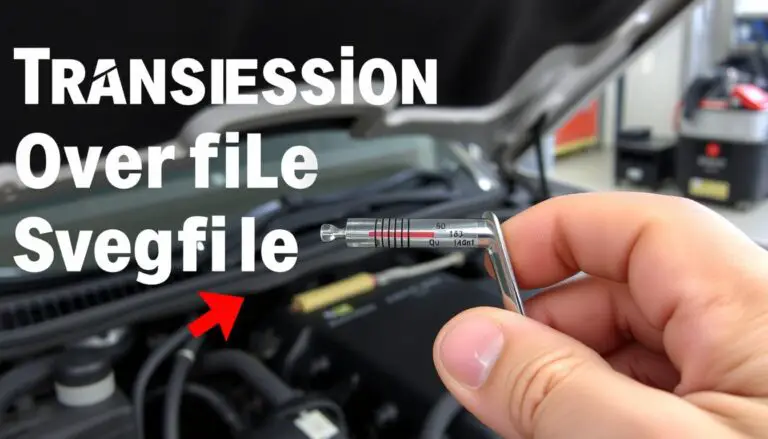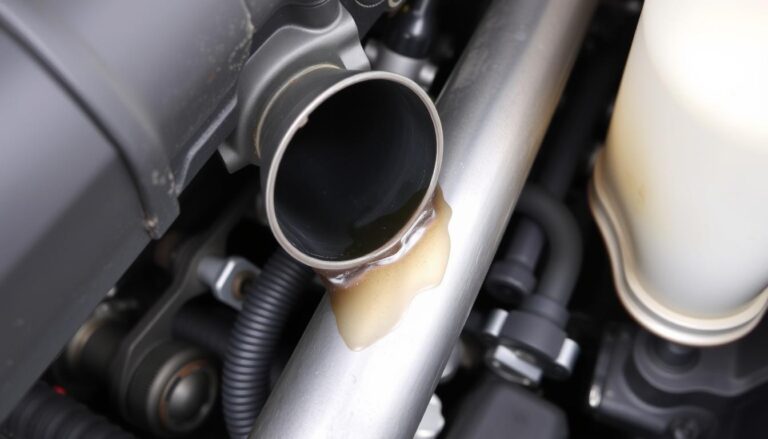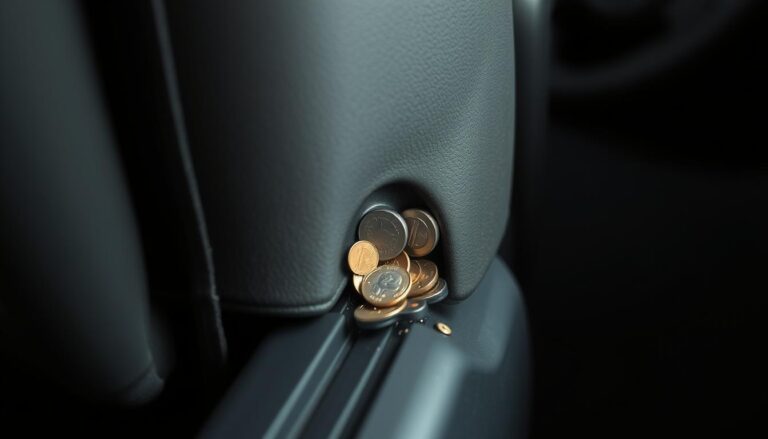The occurrence of an overheating engine scenario, even with coolant levels at the optimal threshold, precipitates a state of high anxiety. This predicament poses a substantial threat to the integrity of the engine, necessitating immediate intervention to avert catastrophic consequences.
Grasping the causes of overheating is paramount in rectifying the situation. Predominant culprits include a malfunctioning thermostat, a defective radiator fan, or leaks within the cooling apparatus.
Despite the presence of full coolant, the vehicle’s propensity to overheat persists, driven by these underlying malfunctions. This discourse aims to elucidate the potential causes and proffer diagnostic and corrective measures.
Key Takeaways
- Common causes of overheating despite full coolant levels.
- Steps to diagnose the overheating issue.
- Potential fixes for a malfunctioning cooling system.
- Importance of regular maintenance to prevent overheating.
- How to identify signs of a faulty thermostat or radiator fan.
Understanding Car Overheating: Causes Beyond Low Coolant
Engine overheating presents a complex challenge, often when coolant levels seem sufficient. To unravel this enigma, it is imperative to comprehend the fundamental mechanics of a vehicle’s cooling apparatus.
The Cooling System Basics
The cooling system is an indispensable facet of your vehicle’s engine, tasked with temperature regulation and overheating prevention. It comprises several pivotal elements, each contributing to the engine’s thermal equilibrium.
Components of a Vehicle Cooling System
The cooling system’s architecture typically encompasses the radiator, water pump, thermostat, coolant hoses, and fan. These components are integral to engine temperature management. For example, the water pump ensures coolant circulation through the engine, while the thermostat controls coolant entry into the engine block.
How Coolant Circulates Through Your Engine
Coolant circulation is an ongoing process, facilitated by the water pump’s action. It propels coolant through the engine block and radiator. As it absorbs engine heat, it reaches the radiator, where heat is expelled. This cycle is essential for maintaining the engine’s optimal temperature. For a deeper exploration of engine overheating causes and prevention strategies, refer to this comprehensive guide.

Why Overheating Occurs Despite Full Coolant
Engine overheating can occur even with a full coolant reservoir, due to several factors. A faulty thermostat or malfunctioning water pump can impede cooling, leading to overheating. Leaks in the cooling system, though not immediately apparent, can also cause problems, manifesting when the engine is hot and under pressure.
Recognizing these potential causes is vital for accurate diagnosis and resolution. For instance, if a Chevy 350 engine operates at 230 degrees, it is advisable to inspect the cooling system components for any malfunctions, as discussed in this article.
Signs Your Car Is Overheating With Full Coolant
When the temperature gauge ascends despite a full coolant reservoir, it heralds an underlying issue. Identifying these signs is imperative to avert engine damage. This segment delves into the indicators that suggest your vehicle is overheating, despite having sufficient coolant.
Dashboard Warning Indicators
The dashboard often serves as the first alert system for overheating. The temperature gauge is a pivotal indicator; its proximity to the maximum or entry into the red zone signifies overheating. Contemporary vehicles may also exhibit warning lights or messages on the dashboard, signaling elevated engine temperatures.
Physical Symptoms of Overheating
Physical manifestations can also signal overheating. Steam or smoke emanating from the hood is a clear indicator of excessive heat. A sweet or burning odor may also be present, indicative of coolant leaks or other overheating-related issues. For further insights into diagnosing overheating, refer to this resource on car repair.
Audible and Visible Warning Signs
Audible cues such as unusual noises or hissing sounds from the engine area can signal overheating. Visual indicators include excessively hot hoods or components. Coolant leaks onto the ground may also occur, signaling cooling system issues. 
Recognizing these signs enables prompt action to prevent engine damage. Regular maintenance and inspections are essential in detecting potential problems before they become severe.
Safety First: What to Do When Your Car Overheats
Upon encountering an overheating scenario, prompt action is imperative to avert potential damage. The initial imperative is to prioritize personal safety and the safety of fellow road users.
Immediate Actions to Take
Upon detection of overheating, it is essential to relocate to a secure area expeditiously. Subsequently, deactivate the engine and permit it to cool. A thorough examination of the coolant level is then necessary to ascertain the presence of a coolant leak or any other anomalies. In the event of uncertainty, seeking the counsel of a professional mechanic is advisable.
What Not to Do When Overheating Occurs
It is paramount to refrain from removing the radiator cap when the engine is at its peak temperature, as this can precipitate severe burns. Driving an overheating vehicle further can result in substantial engine deterioration. Vigilance towards signs indicative of a coolant leak, such as visible puddles beneath the vehicle or a distinctive sweet odor, is also crucial.
| Action | Do/Don’t |
|---|---|
| Pull over immediately | Do |
| Remove radiator cap when hot | Don’t |
| Check coolant level | Do |
| Continue driving when overheating | Don’t |
Diagnosing Why Your Car Is Overheating With Full Coolant
When your vehicle overheats despite a full coolant system, it is imperative to identify the primary cause to avert engine damage. Begin by scrutinizing the coolant system for leaks, as even minor leaks can precipitate substantial problems. Inspect the cooling system’s components, encompassing hoses, the radiator, and water pump, for any signs of deterioration or malfunction.
A malfunctioning thermostat can also contribute to overheating. If it becomes stuck in a closed position, coolant circulation is impeded, leading to an increase in engine temperature. Inspect the thermostat and replace it if necessary. Further, a faulty radiator fan or a clogged radiator can hinder the cooling process, necessitating prompt car repair to address these overheating causes.
If you are not adept in DIY inspections or if the issue persists after examining these components, seek the expertise of a professional mechanic. They will conduct a comprehensive diagnosis and suggest the required car repair. By pinpointing and rectifying the underlying issue, you can avert further damage and ensure your vehicle operates efficiently.
FAQ
What are the common causes of a car overheating with a full coolant system?
The primary culprits include a malfunctioning thermostat, a defective water pump, coolant leaks, or a compromised radiator.
How do I check for coolant leaks in my vehicle?
To identify coolant leaks, scrutinize the cooling system’s components, hoses, and radiator for any signs of deterioration or wear. Also, inspect for green or yellow fluid emanating from the engine or radiator.
Can a bad thermostat cause my car to overheat?
Affirmatively, a defective thermostat can precipitate overheating by impeding the coolant’s circulation through the engine.
What are the signs of a malfunctioning water pump?
Indicators of a faulty water pump include leaks, an abnormal increase in noise, or a visibly worn-out or loose pulley, all of which can lead to engine overheating.
Is it safe to drive an overheating car?
Absolutely not, as driving an overheating vehicle poses a significant risk of engine damage or a complete breakdown, potentially culminating in an accident.
How do I diagnose the root cause of my car’s overheating issue?
To pinpoint the source, thoroughly examine the cooling system components, inspect for any coolant leaks, and, if necessary, seek the expertise of a professional mechanic for a comprehensive evaluation.
Can a damaged radiator cause my car to overheat?
Affirmatively, a compromised radiator can lead to overheating by failing to adequately dissipate heat from the coolant.
What should I do if my car is overheating while driving?
In the event of overheating while driving, immediately pull over to a secure location, shut off the engine, and verify the coolant level to mitigate further damage.


